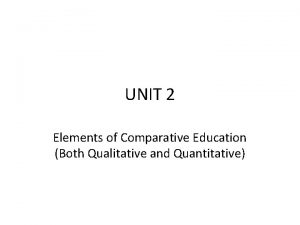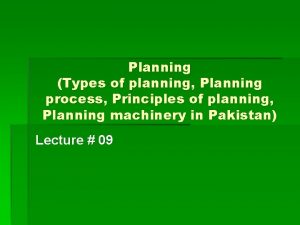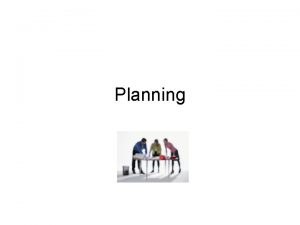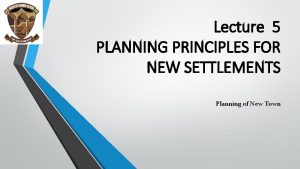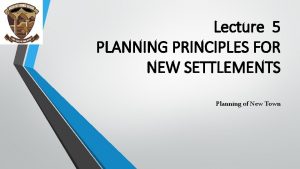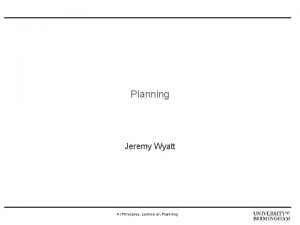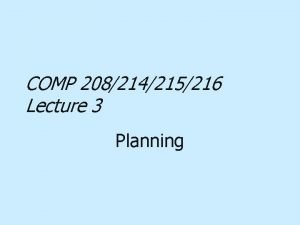Lecture 2 Principles in Planning Principles in Planning









- Slides: 9

Lecture 2

Principles in Planning

Principles in Planning Principles considered in planning are listed below: 1. Green Belts 2. Housing 3. Transportation 4. Public Building 5. Zoning 6. Recreations 7. Roads System

1. Green Belts The implementations of the green belts on the periphery of town results in limitations of its size and hence the final size of town can anticipated. It prevents the loss of town identity. Ensures the economic use of urban land facilities. It also prevents ribbon development. Also ensures that adequate recreational facilities are in every one’s environment, prevents erosion of agricultural land.

2. Housing A lot of care should be taken while providing housing accommodation to different categories of people. It should be made sure that there is no development of slums and in future if occur it must be discouraged and removed by the authorities.

3. Transportation The town must be provided with suitable facilities at easy access so that there is least time consumed from work place to residency. The essential format of transportation planning process is based upon two fundamental assumptions. Firstly the various land use activities that are pursued at both origin and destinations. Secondly, that a relationship inevitably emerges from these movement demands which not only be readily quantified but also remains constant in future. q Surveys q Forecasts q Goal Formulations q Network Design and Testing q Evaluation and Implementation These factors are important and play a key role in the transportation planning.

4. Recreation As per size of town enough space must be given for the recreation centers for general public. Following are the factors which determines its demands: q Population growth q Changing work pattern q Income q Education q Car ownership These are things which are necessary at the time of plotting the recreation in any area. Keeping these aspects in mind a planner can easily provide such recreation which is up-to-date and also for the necessities of future.

5. Zoning Towns should be divided into suitable zones, and suitable area must be provided in order to accommodate people easily. Zoning is the process of the development and segregation of land its parcels or area of towns and ascribes to them broad classification of appropriate use. These zones are q Residential zone q Commercial zone q Educational zone q Recreational zone These zones provide a proper distribution of land that makes it easy to provide the place of a particular zone and specify the area for that according to standards.

6. Public Building It includes everything a community needs to support its residents, capital buildings, libraries, museums, parking structures, conference centers, courthouses, fire station and police station, other administrative spaces and offices. Planner is concerned with thousands of such projects worth in billions. These projects or buildings are design by planner keeping in mind the assessments from public, construction services, professional excellence thus he achieve his goal by these skills and meet the requirements of public. Planner keep in mind that the buildings should be sophisticated following success and community’s identity.
 01:640:244 lecture notes - lecture 15: plat, idah, farad
01:640:244 lecture notes - lecture 15: plat, idah, farad Land use planning lecture notes
Land use planning lecture notes Land use planning '' lecture notes
Land use planning '' lecture notes Land use planning lecture notes
Land use planning lecture notes Supply chain management and total quality management ppt
Supply chain management and total quality management ppt Project planning and management lecture notes ppt
Project planning and management lecture notes ppt Principles of economics powerpoint lecture slides
Principles of economics powerpoint lecture slides Define the concept of comparative education
Define the concept of comparative education Strategic planning vs tactical planning
Strategic planning vs tactical planning Planning balance sheet in urban planning
Planning balance sheet in urban planning







